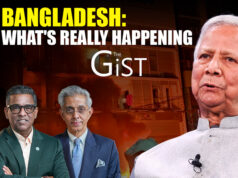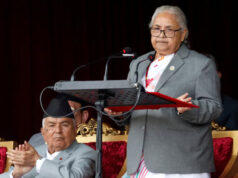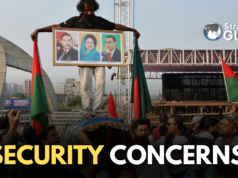India’s recent military strikes on terrorist and military infrastructure across Pakistani territory—dubbed Operation Sindoor—may have hit a truce, but the storm of media coverage, commentary, and speculation shows no sign of abating. Amid the noise, we risk overlooking the deeper realities the operation has uncovered.
India’s military, despite global media misinformation, has demonstrated decisive operational superiority over Pakistan. New Delhi has presented verifiable evidence of its actions; Islamabad, in contrast, has peddled doctored images, fake videos—and bizarrely, promoted General Asim Munir to Field Marshal.
To understand the broader significance, we must momentarily step away from the frenzy. This moment demands not a complete overhaul but a thoughtful recalibration of our diplomatic and strategic posture—grounded in memory, regional partnerships, and narrative control.
India’s military history features brilliant tactical successes that often failed to yield long-term strategic gains. The 1971 war is a classic example. Though it led to Bangladesh’s creation, India did not fully consolidate its geopolitical advantage. One fallout has been large-scale migration from Bangladesh into India—a demographic challenge with serious national security implications, as acknowledged by the Supreme Court. The absence of a repatriation framework and long-term regional strategy blunted the war’s strategic dividends.
Donald Trump’s abrupt announcement of a ceasefire between India and Pakistan during the operation surprised many. But this was not an aberration. The US has a long security history with Pakistan dating back to the Cold War. Despite Islamabad’s duplicity, sections of the US establishment still see strategic utility in the relationship—whether it’s intelligence cooperation or drone strike logistics, as seen in the 2022 al-Zawahiri hit in Kabul.
This does not negate the growing India-US partnership in maritime security, technology, and trade. But it underscores why India must not over-rely on Washington to maintain regional equilibrium. The US continues to balance ties between the two nuclear neighbours—despite rhetorical de-hyphenation.
Turkey’s overt support to Pakistan during the recent crisis—including military assistance—has alienated the Indian public. This came despite India’s swift humanitarian aid to Ankara after the 2023 earthquake (Operation Dost). But outrage must be tempered with realism.
Under President Erdogan, Turkey has positioned itself as a neo-Ottoman power, aspiring to lead the Islamic world and regularly backing Pakistan on Kashmir in global forums. It combines soft power, disinformation, and opportunistic alliances—making it a multi-dimensional adversary.
In this context, India’s growing partnership with Greece is not just timely—it’s strategic. Greece, with its long-standing hostility towards Turkey, shares India’s concerns. The two nations inked a strategic partnership in August 2023, already yielding tangible results.
Joint naval drills at Souda Bay, participation in Greece’s INIOCHOS air exercise, and India’s debut at DEFEA—Greece’s top defence expo—signal a deepening military and industrial collaboration. As Indian defence firms explore partnerships with Greek manufacturers, this axis has the potential to extend from the Eastern Mediterranean to the Indian Ocean. It also sends a clear message to both Ankara and Islamabad.
India must stop viewing these relationships in isolation. It should see itself as a key node in a broader power equilibrium stretching into Europe, not merely as a subcontinental actor.
One of the most insidious aspects of Operation Sindoor has been the information war. Al Jazeera’s now-retracted claim about a captured female Indian pilot—based on morphed visuals—is just one example. That a well-resourced global outlet could not verify basic facts points to wilful propaganda, not accidental error.
This tactic serves two purposes. First, it floods the zone with disinformation—false claims about downed jets and captured soldiers—to such an extent that even credible rebuttals lose their impact. Over time, it fosters a corrosive trust deficit: citizens grow suspicious of news, media, even the state itself.
Second, it allows countries with weak institutions and global standing—like Pakistan—to leverage cheap, effective tools like media manipulation and lobbying. For such states, conventional power is limited; perception is the new terrain of warfare. India must respond not just with outrage but a coordinated strategic information architecture.
Operation Sindoor must not be reduced to a moment of nationalistic euphoria. It should mark the beginning of a sustained strategic shift. India’s post-strike diplomacy—sending all-party delegations abroad—is a clear sign of integrating political, military, and diplomatic elements.
This multi-domain coordination should be the new template: pragmatic assessments of partnerships, narrative control, and expanded engagement with middle powers—not just headline ties with great powers.
As India moves deeper into the 2030s, navigating a fragmented global order, Operation Sindoor should serve as a reminder: Tactical victories mean little without strategic follow-through.
Dr. Manish Barma has completed his PhD from the Centre for European Studies, School of International Studies, Jawaharlal Nehru University, New Delhi. Previously, he has served as an Assistant Professor at Rashtriya Raksha University, Gujarat, and as a Research Associate at Chintan Research Foundation, New Delhi.





